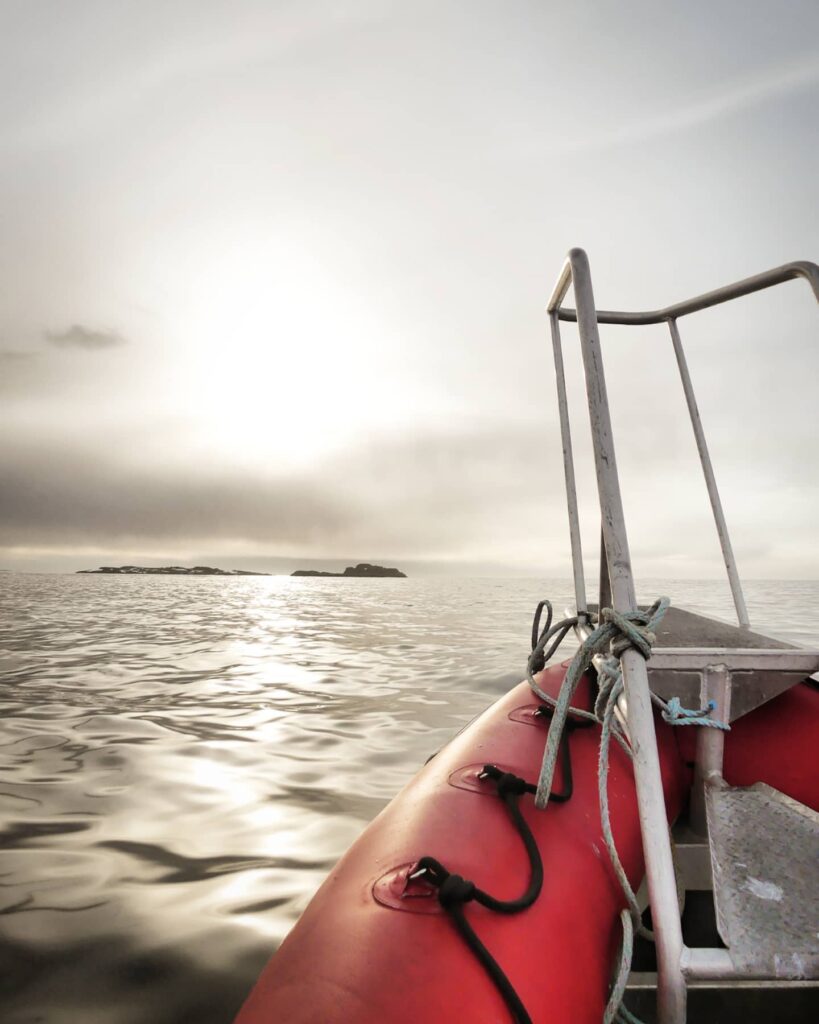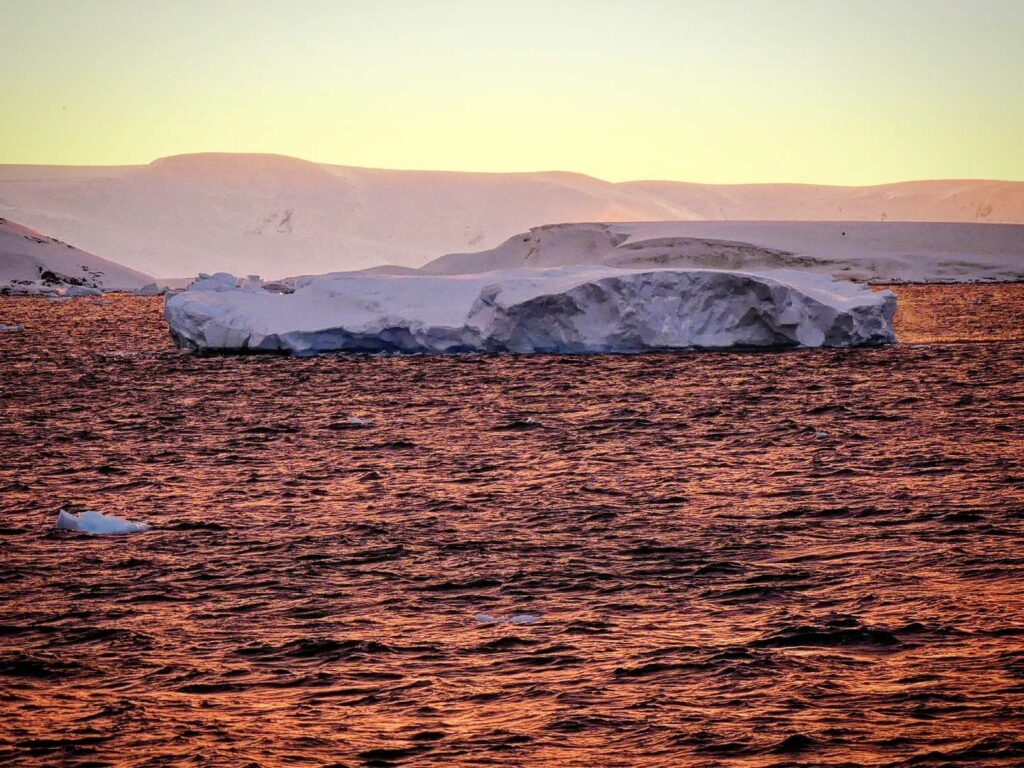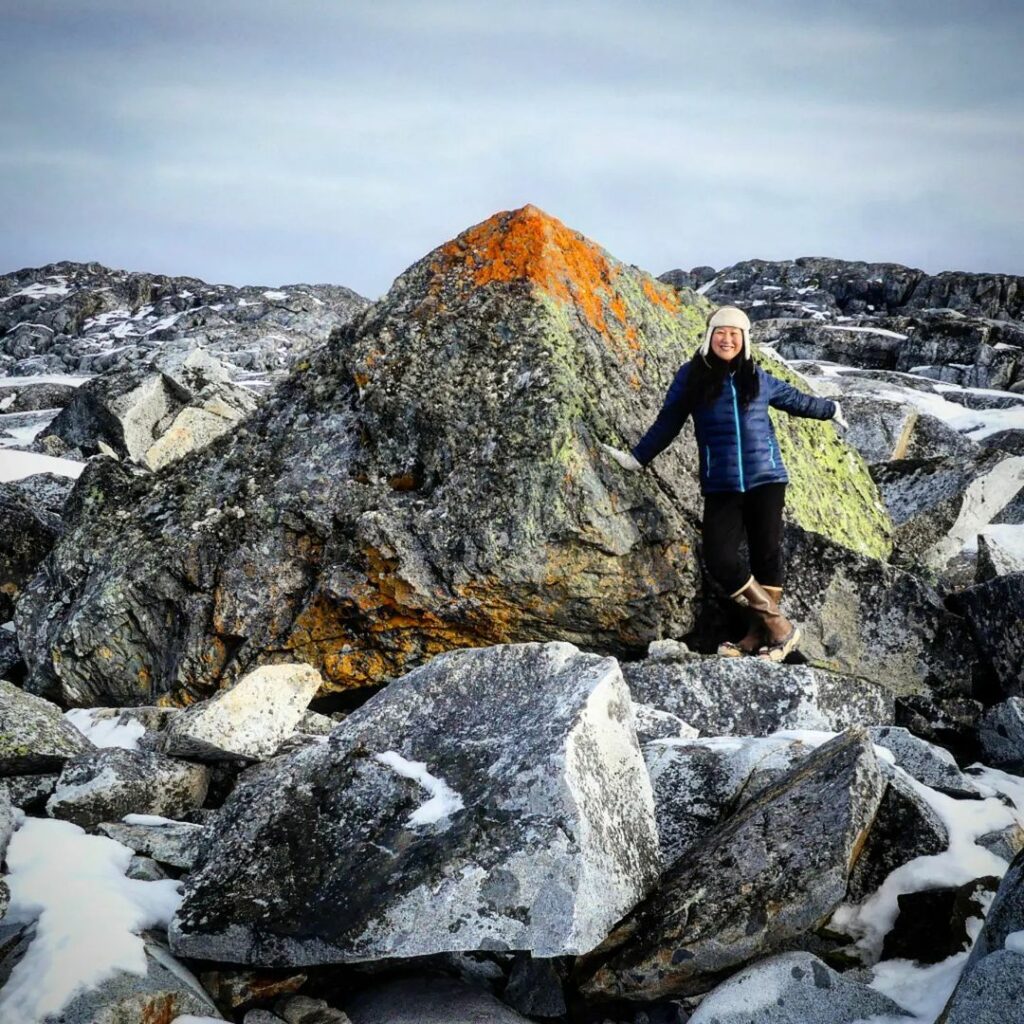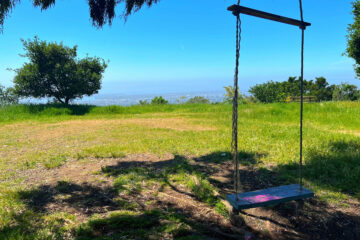Artist You Should Know: Simply Antarctica
Every Summer and Winter, Keri Nelson travels from her home in San Francisco all the way back to Antarctica (also known as “The Ice”) to work at a United State research base, Palmer Station, on the Antarctic peninsula. Her husband, Alex, stays behind to work his tech job and watch from afar as Keri adventures on our 7th continent. Every time she leaves The Bay, she works in Antarctica on a contract that would last for 4-14 months.
In hopes to show the world her love for Antarctica, Keri started a new photo project, Simply Antarctica. Through her photos, she shows us the lesser-known details of what life is like on The Ice for humans and animals that live alongside them. Her photos take your breath away and allow you to visit Antarctica in real-time with Keri. She shares her almost daily experiences there with us and we can get a glimpse of what it would be like to live there as compared to our Bay Area bubble.
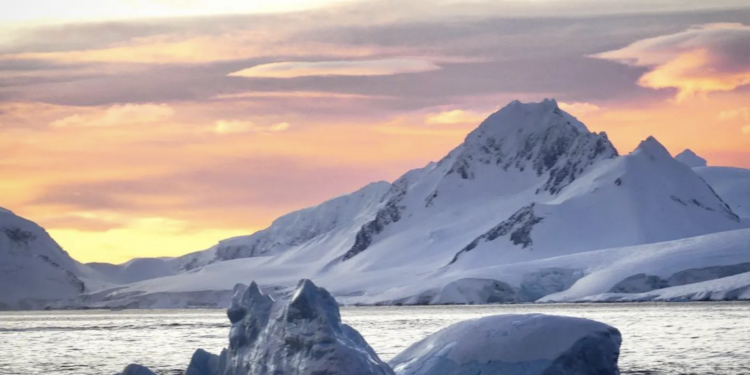


Q: Why did you decide to start photographing your adventures in Antarctica?
Antarctica is a place not many have been able to go to. Through Keri’s photos, you feel you’re right there with her. They are inspiring, beautiful, and educational. She teaches you some little facts about the equipment, the animals, and what daily life looks like on our 7th continent.
“Antarctica is such an inspiring place to look at. I’m from a small town, and I really started taking photos so I could show people I love what I was seeing. That generated so much interest from strangers that I started a public, Antarctica-only account. The things I see on that continent astound me so much that I feel like I’m being a bit selfish when I don’t share what I see.” says Keri.
Q: For those who don’t know your history. Tell the readers how long you’ve been working in Antarctica and when did you start Simply Antarctica?
“I’ve worked in Antarctica since 2007, at stations across the continent, including work at the South Pole. I’ve wintered over several times, and I’m currently working at Palmer Station. This is the USA’s smallest base, which focuses on marine research and is located on the Antarctic Peninsula (fairly northern Antarctica).” says Keri.
“I’ve been in Antarctica as long as 14 months and as little as five months, working both Antarctic summers and winters.”
Palmer Station is one of 70 research stations in Antarctica. Other countries operate most stations. The U.S. has 3 stations on the continent and 2 research vessels. The most southern station on Ross Island is McMurdo Station, at the geographic South Pole there is Amundsen-Scott South Pole Station, and on Anvers Island in the Antarctic Peninsula region you’ll find Palmer Station where Keri works today.
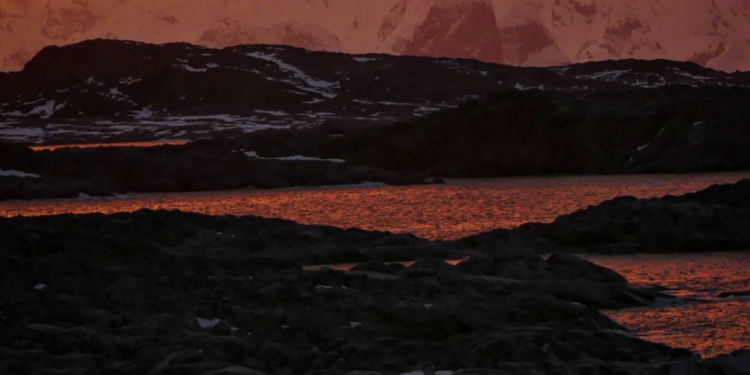
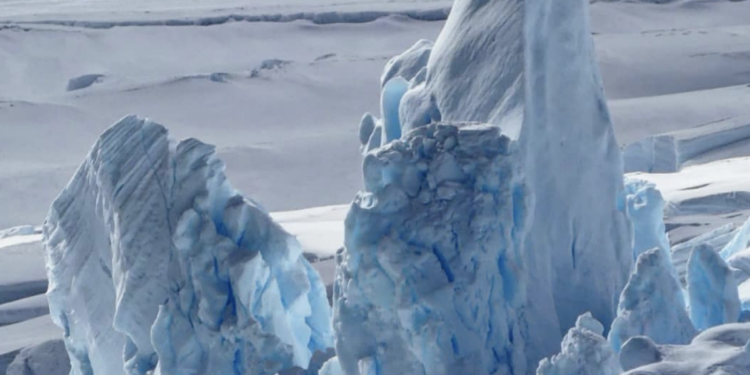

Q: How big is Palmer Station on Antarctica? Tell us about the place – is it like a mini city or like a large building that everything is in?
“I currently work at a smaller science station – even in the busiest part of the summer, we have fewer than 50 people around. We live in a few small buildings that are nestled together, labs, dorms, a kitchen, workshops, offices, and storerooms. To support marine science we have small boats and mechanics shops to look after them. Science bases take a lot of different forms in Antarctica. The American base, McMurdo Station, is essentially a small city in the summer – with 1000 or more people in the height of a normal summer science season. I worked at the Amundesen-Scott South Pole Station for a couple of summers, and that station is basically one large building with just over 150 people all living in it together.”
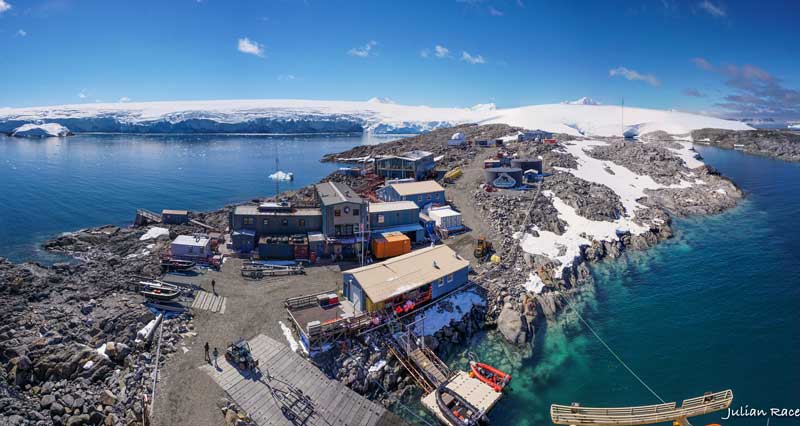
View of Palmer Station, the smallest US Antarctica research station – photo from http://www.palmerstation.com/
Q: Tell us about a couple of adventures you’ve had on The Ice you would have never dreamed of having when you were growing up.
One of the things I love about these “Artist You Should Know” interviews is getting to share their origin stories with you. Keri’s life story has been filled with so many twists and turns – so many beautiful moments where she found herself in new and wonderful places that opened up her life in new spectacular ways. She was born in South Korea and adopted into a U.S. family who raised her in a small town of Minnesota. She had no idea that eventually she’d be with the penguins, seals, and glaciers of Antarctica later in her life.
“Sometimes I’m out driving a Zodiac boat, negotiating icebergs, or I’m helping whale researchers look for whale tags with Antarctic mountains in the distance, or zooming across an ice sheet on a snow machine towards an active volcano, or I have an entire remote Antarctic island to explore on my own for an hour, and I think – how on earth did I get here? I’m an orphan girl who grew up on a farm in Minnesota, and I definitely should not be the person doing these things. But I am. And it’s so surreal sometimes.”
Q: You are married and your husband stays in SF while you’re away – how often do you get to connect? How has it negatively or positively impacted your marriage to be so far away for so long?
Alex and I talk to each other all the time, calling almost every day and texting when we can. It doesn’t seem like it should be working out, but in fact, for me, it feels like I get to fall in love with Alex again and again and again as I return from contracts. We just really like each other a lot – we can’t help it. When I’m off the ice, we just prioritize spending time together as much as we can.”
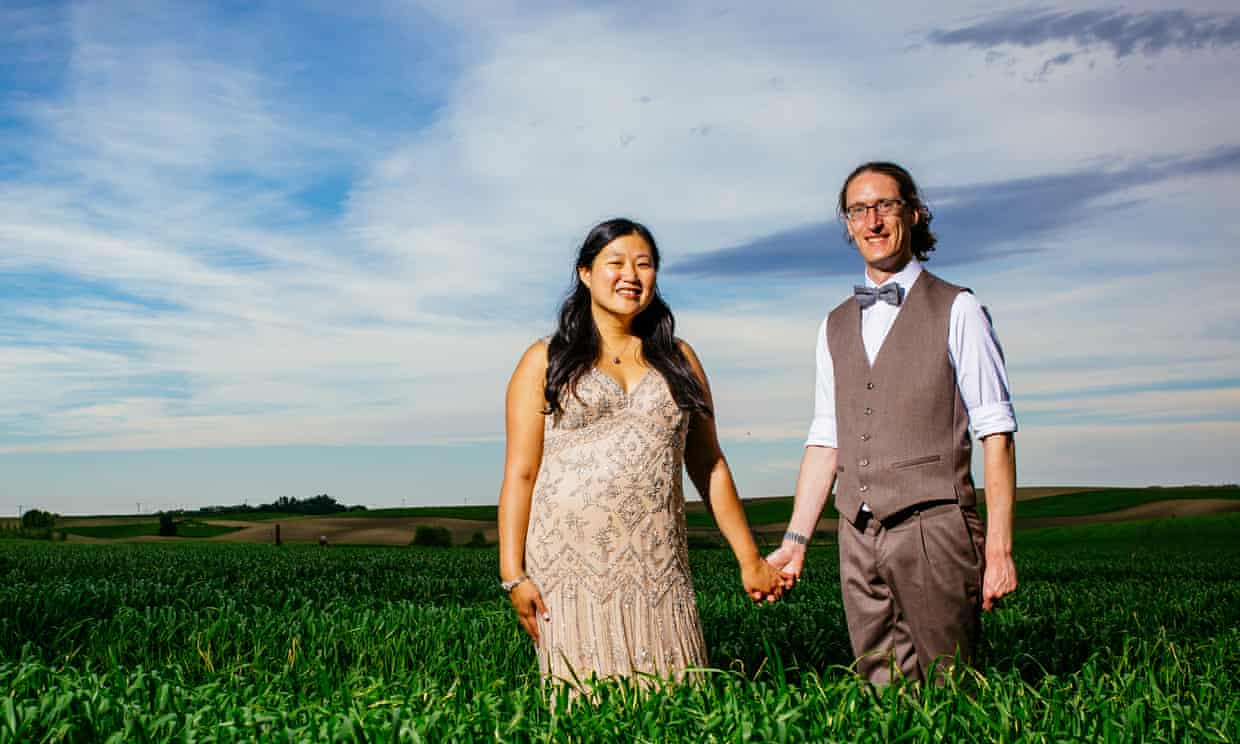
Keri and her husband Alex – Photograph: provided by Keri Nelson for The Guardian
I’ve personally known Alex and Keri for a few years now. Alex and I are hiking buddies and we play Skee Ball for Brewskee Ball in Oakland and SF. A couple of years ago, I did actually get to read all about their love story via The Guardian. My favorite thing about the two of them is watching them fall for each other over and over again every time Keri comes home.
In the Guardian article, Keri talks about when they first started dating years ago. “The auroras would be going off above our head, so we would watch that together,” says Keri. “We found patches of snow and pretended we were penguins and slid down the hill. It was very cute and almost makes me want to barf.” She laughs. “I don’t think either of us was really serious about each other at that point. It was just an Antarctica winter thing that was happening.” This was all back in 2009. Eventually, they did get married though so clearly it was more than just a winter fling.
Q: Pandemic Times: tell us how it was during Covid for you on Antarctica. Were there special things you had to do?
“Pandemic times were obviously very challenging for just about everyone in the world, and the Antarctic programs were not spared. Over the last few years, we’ve all had to isolate for weeks and test negative for COVID multiple times before getting to Antarctica. Once vaccines were available for everyone, we had them available from our doctors. There was an enormous amount of planning that went into developing safe travel there, and contingency plans for transporting COVID patients from the ice, as well as extra medical personnel on hand. It’s been an enormous challenge for stations across the continent.”
Keri was also interviewed for CNN when they did an article on Covid on The Ice. Interestingly, the article notes that Antarctica was the only continent that didn’t have any cases of Covid during the pandemic.
Q: For Simply Antarctica – tell us how it’s been working on the project. Have you met new people through it?
“Simply Antarctica constantly surprises. When I started the project, I was just trying to redirect the many requests I had from, you know, friends of my mom’s, for photos. I wanted one place people who were interested in my personal experiences in Antarctica to access, so I wasn’t pestering people on my personal social medial pages who just didn’t care. I was completely surprised when it took off, filled with responses from strangers who sincerely were curious and wanted to know more. It was so unexpected and cool, and these days I interact more with strangers than anyone I know personally on that account. I’ve met so many amazing Antarctica fans, from the causally curious to the expert observers. I’ve met artists, journalists, filmmakers, podcasters, adventurers and musicians from all over the globe. People from everywhere respond to these images and they should! Antarctica is for everyone, I’m so glad people are tuning in.”
“Simply Antarctica has always been about creating a space for people – both friends and strangers – to learn more and interact more with this place I personally love. I’m really searching for opportunities to continue that mission, and still honor and respect our precious seventh continent. There’s so much potential here to help people build a relationship with this place, so stay tuned.”
Q: Lastly, I’m curious as to how you’ve noticed Antarctica change over the years you’ve been there… have you seen the impact of global warming?
“It’s really sobering to see, but I am actually stunned by the amount of climate change I see, even within the space of a single summer season. In the last few years, we’ve seen local glaciers recede several feet each year. Entire new islands have emerged in just a few seasons. Some animals that like extremely cold weather are leaving the area, and animals that are used to warmer temperatures are replacing them. It’s actually difficult NOT to notice climate change on the Antarctic Peninsula these days, as much as I would really love to tell a happier story than that.”
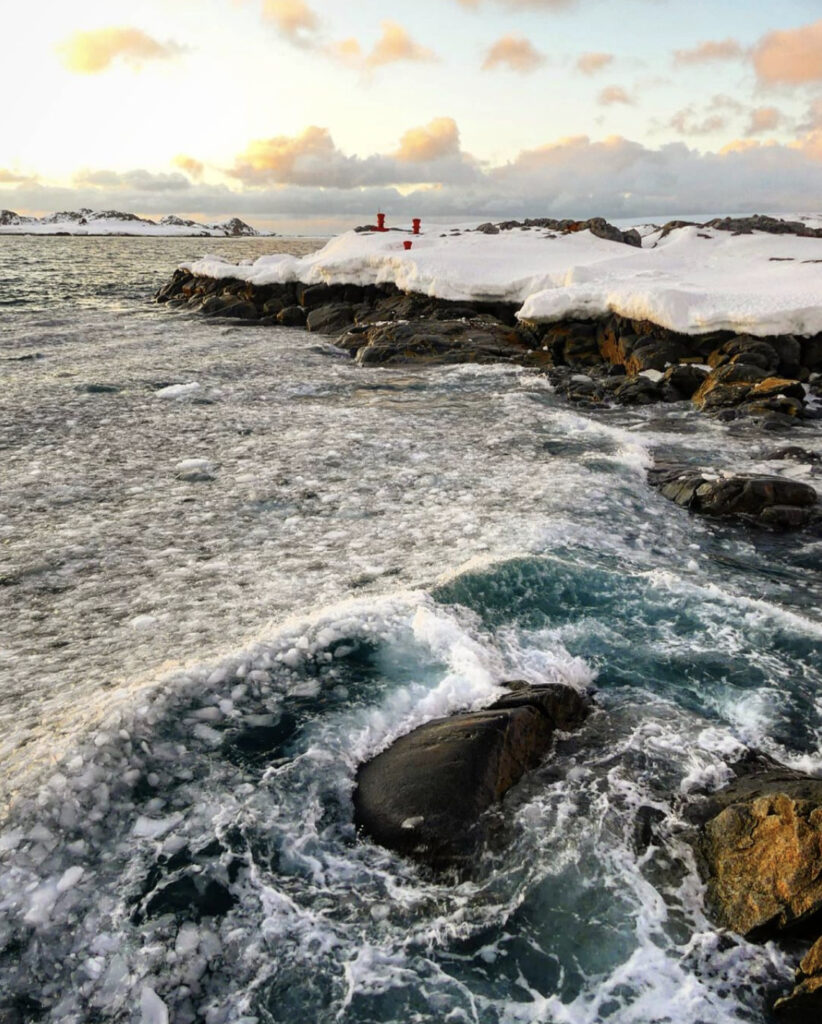
In this photo, Keri shows us how ice comes in many forms on Antarctica – photo by Keri Nelson for Simply Antarctica
Follow Simply Antartica on these platforms:
FB: simplyantarctica
Instagram: simplyantarctica
Tik/Tok: simplyantarctica
All photos by Keri Nelson unless otherwise noted.



